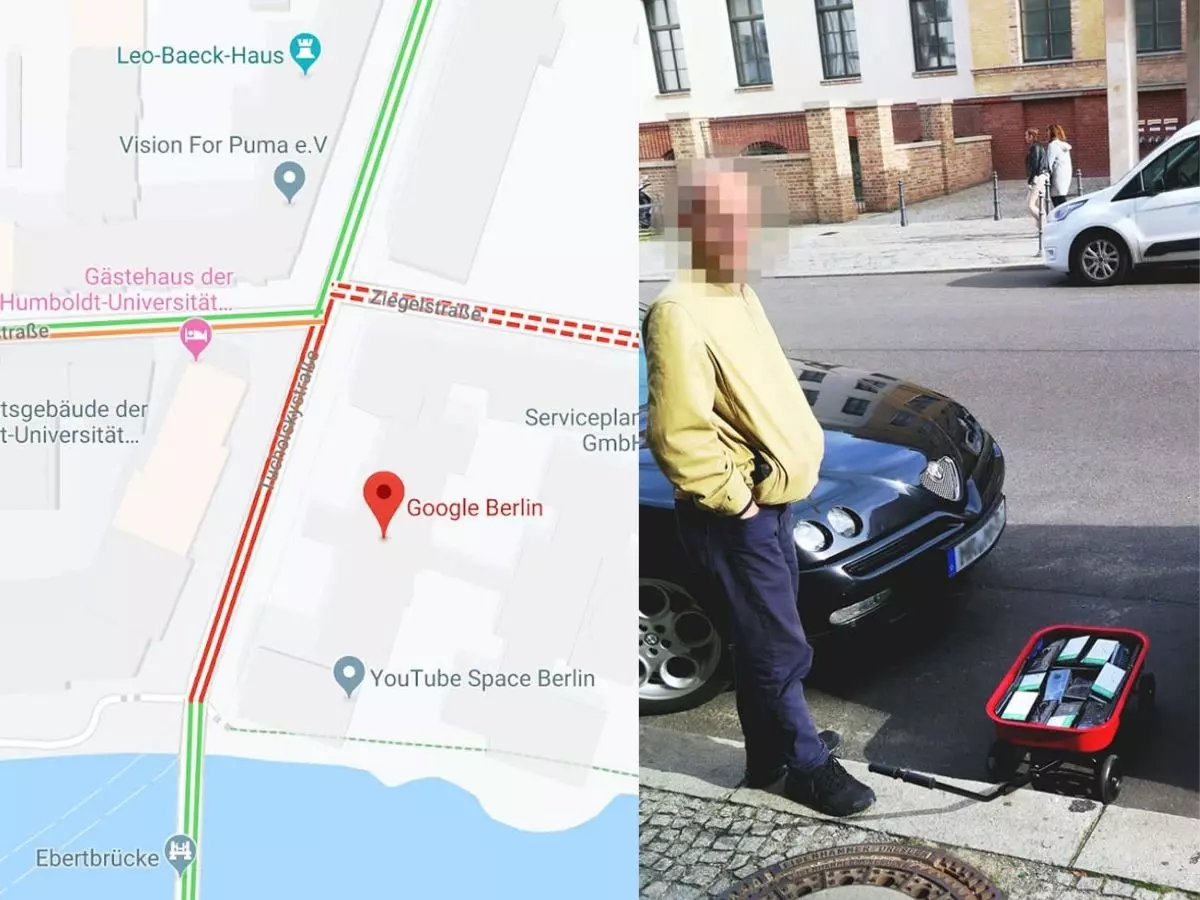Man Faked Traffic Jam On Google Maps By Carrying 99 Phones, Fooled Everyone Like A Boss
Artist Simon Weckert conducted a rather unusual experiment to test Google Maps¡¯s accuracy. He took a wagon and put 99 phones in it with Google Maps navigation turned on. This cart, he moved along the streets of Berlin, even outside Google¡¯s office.

In today¡¯s world, Google Maps truly is a boon. It helps us navigate to locations we¡¯ve never been to while also keeping us up-to-date with traffic details in specific locations in real-time. However, often we feel that Google isn¡¯t as accurate as we want it to be. And a guy with 99 phones in Berlin proved exactly that.
 Simon Weckert
Simon Weckert
Artist Simon Weckert conducted a rather unusual experiment to test Google Maps¡¯s accuracy. He took a wagon and put 99 phones in it with Google Maps navigation turned on. This cart, he moved along the streets of Berlin, even outside Google¡¯s office.
It is no news that when you turn on navigation on Maps, Google tracks the device and takes some data like its speed and positioning to denote the traffic status.
Now Google sensed these many phones in close proximity to each other, all moving at a slow pace -- something that commonly happens when there is a traffic jam. Within moments, Google Maps termed it as a heavy congestion and showed the street in a bright red line -- signifying the slow-moving traffic situation -- even when the streets were clearly empty.
In a situation like this, to save driver¡¯s time, the navigation would re-route to reach the destination with a faster ETA.
 Simon Weckert
Simon Weckert
It¡¯s true that not everyone has access to so many phones that they¡¯ll walk around, simulating fake jams to just trouble Google Maps. Moreover, the method also cannot be fully trusted as the blogpost has a lot of necessary information missing.
But it still goes to show that Google¡¯s tracking of information isn¡¯t the most accurate. Moreover, someone could actually use a similar setup like this to cause fake jams for diverting traffic to aid in criminal activities or just create nuisance.
Hopefully, Google fixes this soon.
